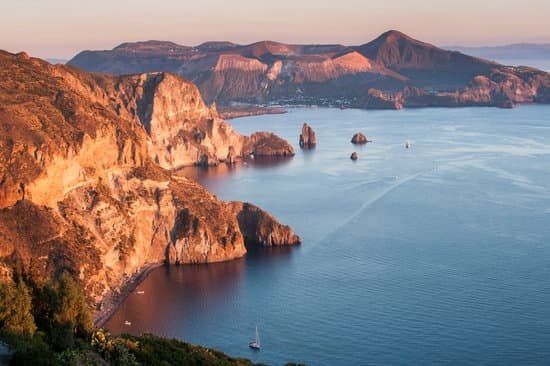When is the best time to travel to Italy? Italy is a country that consistently captivates visitors with its stunning landscapes, rich history, vibrant culture, and delectable cuisine.
From the romantic canals of Venice to the ancient ruins of Rome and the picturesque vineyards of Tuscany, there is something for every traveler in Italy. Whether you are drawn to the art-filled cities, charming coastal towns, or rolling countryside, Italy offers a diverse range of experiences that appeal to all kinds of wanderers.
One of the factors that make Italy such a popular travel destination is its varied climate throughout the year. Each season brings its own unique charm, from sunny beaches in summer to colorful foliage in autumn and snow-capped mountains in winter.
Depending on your preferences and interests, you can choose the best time to visit Italy based on the activities you wish to partake in – whether it’s hiking in the Alps, exploring ancient ruins, or indulging in culinary delights.
In this article, we will delve into the different seasons in Italy and how they affect travel experiences. We will also explore peak tourist seasons when crowds flock to popular attractions and off-peak seasons when you can enjoy a more relaxed and authentic Italian experience.
Additionally, we will cover popular events and festivals happening throughout the year, budget-friendly travel tips, recommended destinations based on the time of year, and personal recommendations from seasoned travelers who have explored Italy at various times. So sit back, relax, and let us guide you through the best time to travel to this enchanting country.
Weather and Climate
Italy boasts a diverse climate, offering travelers a variety of experiences depending on the time of year they choose to visit. Each season in Italy has its unique charm, from the sunny beaches of summer to the snowy mountains of winter. Understanding the weather patterns can help you plan your trip effectively and make the most of your visit.
Spring
In spring, Italy comes alive with blooming flowers, mild temperatures, and longer days. This season is ideal for exploring outdoor attractions such as gardens, vineyards, and historic sites without the crowds that peak tourist season brings. The weather is generally pleasant during spring, making it a great time for sightseeing while enjoying comfortable temperatures.
Summer
Summer in Italy is characterized by hot weather, especially in popular tourist destinations like Rome, Florence, and Venice. Many Italians take their annual holidays in August, so this month can be particularly crowded. However, if you plan your itinerary wisely and book accommodations in advance, summer can still be a fantastic time to enjoy Italy’s beaches, lakeside towns, and outdoor events. Remember to stay hydrated and protect yourself from the sun when exploring during the peak summer months.
Fall
Fall is a lovely time to visit Italy when the temperatures start to cool down after the heat of summer. The autumn foliage in Tuscany and other regions offers a picturesque backdrop for exploring vineyards and charming villages. Fall also marks the grape harvest season in many parts of Italy, making it an excellent time for wine enthusiasts to visit. Consider visiting during September or October for more manageable crowds while still enjoying pleasant weather throughout most regions of Italy.
Peak Tourist Season
Italy is undoubtedly one of the most popular travel destinations in the world, offering a mix of rich history, stunning architecture, delicious cuisine, and picturesque landscapes. However, knowing when is the best time to travel to Italy can greatly enhance your overall experience. One crucial aspect to consider is the peak tourist season, which attracts a large influx of visitors but also offers vibrant energy and bustling attractions.
Summer in Italy: A Busy but Vibrant Season
During the summer months from June to August, Italy experiences its peak tourist season. This period coincides with school holidays and warmer weather, making it an ideal time for beachgoers and sunseekers. However, this also means that popular cities like Rome, Florence, and Venice can become overcrowded with tourists. Expect long lines at major attractions, crowded restaurants, and higher prices for accommodation and tours.
Spring and Fall: Shoulder Seasons Worth Considering
For travelers looking to avoid the crowds while still enjoying pleasant weather, the shoulder seasons of spring (April to May) and fall (September to October) are excellent times to visit Italy. During these periods, you can witness blooming flowers in the countryside in spring or enjoy the colorful foliage in autumn. The temperatures are milder compared to summer, making outdoor activities more enjoyable. Additionally, you may find better deals on accommodations and experience shorter wait times at popular sites.
Off-Peak Season
Traveling to Italy during the off-peak season can offer a unique and authentic experience for those looking to escape the crowds and immerse themselves in the local culture. One of the main advantages of visiting Italy during the quieter months is the reduced number of tourists, allowing travelers to explore famous landmarks and attractions without the long lines and large crowds.
Additionally, accommodations and transportation options are often more affordable during this time, making it a budget-friendly option for those looking to save money on their trip.
To make the most of your off-peak season travels to Italy, consider visiting popular destinations such as Florence, Venice, or Rome during the shoulder seasons in spring or fall. The weather during these times is generally pleasant, with fewer tourists crowding famous sites like the Colosseum or the Uffizi Gallery.
Strolling through charming cobblestone streets or enjoying a leisurely dinner at an outdoor cafe becomes even more enjoyable when you don’t have to compete for space with hordes of other visitors.
Another advantage of traveling to Italy during the off-peak season is experiencing a more authentic side of Italian life. Without the overwhelming presence of tourists, you’ll have the opportunity to interact with locals, participate in traditional events, and truly appreciate the rich cultural heritage that Italy has to offer.
Whether you’re exploring quaint villages in Tuscany or discovering hidden gems along the Amalfi Coast, traveling during quieter months allows for a deeper connection with this beautiful country. So next time you ask yourself “when is the best time to travel to Italy,” consider venturing off-the-beaten-path during the off-peak season for a memorable and rewarding experience.
- Experience popular destinations without long lines
- Enjoy affordable accommodations and transportation
- Interact with locals and immerse yourself in Italian culture
Events and Festivals
Italy is not only known for its stunning landscapes and rich history but also for its vibrant events and festivals that showcase the country’s culture and traditions. Throughout the year, Italy hosts a variety of festivals that appeal to different interests, making it an exciting destination for travelers looking to immerse themselves in local celebrations.
One of the most famous events in Italy is Carnevale, which takes place in Venice and other cities in February. This colorful festival celebrates the weeks leading up to Lent with elaborate costumes, parades, and masquerade balls. Visitors can witness the grandeur of Venetian masks and enjoy street performances during this festive time.
Another popular event is the Palio di Siena, a historic horse race that occurs twice a year in July and August in Siena. This medieval tradition dates back to the 17th century and involves intense competition between different neighborhoods, or contrade, within the city. The atmosphere during the Palio is electrifying, with spectators cheering on their favorite horses as they race around Siena’s Piazza del Campo.
For music lovers, attending the Verona Opera Festival held from June to September at the ancient Roman amphitheater in Verona is a must-see event. This renowned opera festival features world-class performances against the backdrop of an iconic historical venue, creating a magical experience for attendees. Whether you appreciate classical music or simply enjoy cultural events, the Verona Opera Festival promises unforgettable evenings under the stars.
So when is the best time to travel to Italy? It all depends on what events and festivals capture your interest.
Budget-Friendly Travel
Italy is a dream destination for many travelers, offering a perfect blend of culture, history, and stunning landscapes. While it may seem like an expensive place to visit, there are plenty of ways to enjoy the beauty of Italy without breaking the bank. One key factor when considering budget-friendly travel to Italy is choosing the right time to visit. So, when is the best time to travel to Italy if you’re looking to save some money?
One way to save money when traveling to Italy is by avoiding the peak tourist season, which typically falls during the summer months from June to August. During this time, prices for accommodations, tours, and attractions tend to be higher due to increased demand.
Instead, consider visiting during the shoulder seasons of spring (April-May) or fall (September-October). Not only will you find better deals on flights and accommodations during these times, but you’ll also experience milder weather and fewer crowds.
Additionally, if you’re flexible with your travel dates, consider planning your trip during the winter months from November to February. While some attractions may have reduced hours or be closed for renovations during this time, you can still enjoy Italy’s cities and countryside at a fraction of the cost compared to peak season.
Plus, you’ll have a chance to experience popular destinations like Rome, Florence, and Venice without battling hordes of tourists. By being strategic about when you visit Italy, you can make your dream trip a reality without breaking the bank.
| Season | Advantages |
|---|---|
| Spring/Fall | Milder weather; fewer crowds; better deals on flights and accommodations |
| Winter | Lack of crowds; lower costs; opportunity to explore Italy’s cities at leisure |
Popular Destinations
Italy is a country that offers a wide range of travel experiences, from historical sites to breathtaking landscapes and delicious cuisine. Depending on the time of year you choose to visit, you can tailor your itinerary to make the most out of your trip. Here are some popular destinations in Italy, along with recommendations on when to visit them for the best experience:
- Rome: The capital city of Italy is a must-visit destination no matter what time of year. However, if you want to avoid the crowds and scorching heat, consider visiting in the shoulder seasons of spring (April-May) or fall (September-October). You’ll still get to enjoy all the iconic landmarks such as the Colosseum, Vatican City, and Trevi Fountain without feeling overwhelmed by tourists.
- Florence: Known for its Renaissance art and architecture, Florence is best visited in the spring when the weather is pleasant and the city comes alive with blooming flowers. Take a leisurely stroll across the Ponte Vecchio, explore the Uffizi Gallery, and climb to the top of the Duomo for panoramic views of the city.
- Amalfi Coast: For sun-seekers looking to relax by turquoise waters and picturesque villages nestled into cliffs, visiting the Amalfi Coast in summer (June-August) is ideal. Be prepared for crowds though, as this region is one of Italy’s most popular tourist destinations during this time.
Each city and region in Italy has its charm and unique attractions that can be enjoyed at different times of the year. Whether you prefer bustling cities like Rome or charming coastal towns like Cinque Terre, there’s something for everyone in Italy no matter when you decide to visit.
Personal Recommendations
Italy is a destination that truly captivates travelers with its rich history, stunning landscapes, delectable cuisine, and vibrant culture. Whether you’re an art enthusiast eager to explore the treasures of Florence, a foodie ready to indulge in authentic pasta and pizza in Rome, or a nature lover looking to soak in the beauty of the Amalfi Coast, Italy offers something for everyone. But when is the best time to travel to this enchanting country?
In my personal experience, I have found that the shoulder seasons of spring (April-May) and fall (September-October) are ideal times to visit Italy. During these months, the weather is pleasant, fewer tourists crowd popular attractions, and prices tend to be lower compared to peak season. It’s the perfect balance between comfortable weather conditions and fewer crowds, allowing you to enjoy all that Italy has to offer without feeling overwhelmed by tourist hordes.
Another factor to consider when planning your trip to Italy is attending some of the country’s renowned events and festivals. From the colorful Carnival celebrations in Venice during February to the historic Palio horse race in Siena in July and August, there are plenty of unique cultural experiences throughout the year.
By aligning your travel dates with these festivities, you can immerse yourself in Italy’s traditions and add an extra layer of excitement to your trip. Ultimately, when deciding on the best time to visit Italy, consider your preferences for weather, crowd levels, budget constraints, and desired events or festivals – and get ready for an unforgettable Italian adventure.
Frequently Asked Questions
What Is the Best Month to Go to Italy?
The best month to go to Italy largely depends on personal preferences and goals for the trip. However, many travelers find that May or September offer a good balance of pleasant weather, fewer crowds, and more reasonable prices compared to the peak summer months.
What Is the Cheapest Month to Go to Italy?
If budget is a primary concern, then January and February are generally considered the cheapest months to visit Italy. During this time, many hotels and airlines offer discounted rates due to the off-peak season, making it a more affordable option for budget-conscious travelers.
What Month Does Everything Close in Italy?
August tends to be the month when many businesses in Italy close for summer holidays. This includes small family-owned shops, local businesses, and even some restaurants – particularly in smaller towns or rural areas. It’s worth noting this if you plan on visiting during the month of August to avoid any inconveniences during your trip.

I’m a passionate traveler, writer, and Italophile. My fascination with Italy’s history, art, and culture has led me on countless adventures across the Italian landscape. Through “I Live Italy,” I share my love for this extraordinary country and aims to inspire others to explore its boundless beauty.




